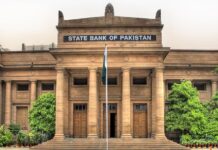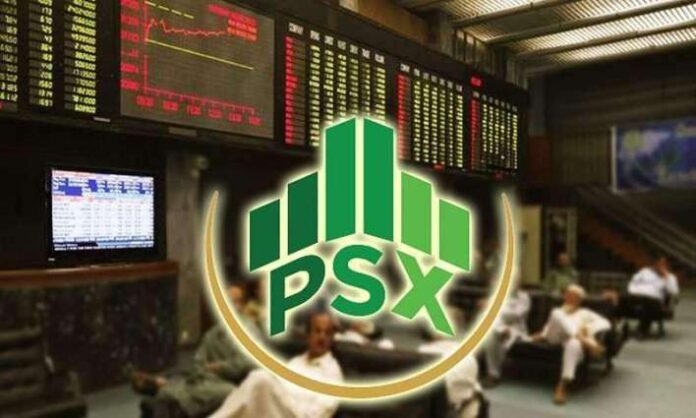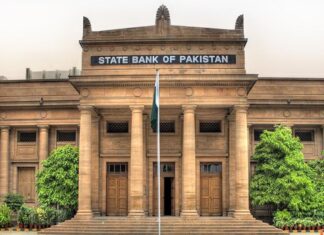The Eid weekend may have ended on Sunday for the rest of the country, but the festivities were only starting early on Monday morning on the Pakistan Stock Exchange (PSX). The rush on the trading floor was expected with the announcement of a stand-by agreement being signed between the government and the IMF on Friday.
But when the dams broke, it was almost too much for the exchange to handle. Trading had to be halted 10 minutes after the markets opened due to abnormally high activity. The stock exchange that had forgotten the light of a trading day in action for almost a year, was overjoyed with activity and liquidity as the markets opened this morning.
For a number of months, the market had little to no availability of funds, owing to uncertainties regarding the country’s economic future. Not only was there a liquidity draught, uncertainty reigned, owing to the difficult business climate. With the restrictions being lifted, and a 9 month Staff Level Agreement being signed with the IMF, a bull-run on Monday was always on the cards.
As predicted, the market saw a spike of around 2,230 points in the benchmark KSE 100 index at opening. Within minutes, the increase was standing above 5.4%, the highest ever single day increase the stock market had ever seen.
Why did the Market halt?
The Pakistan Stock Exchange (PSX) has got rules in place to control extreme fluctuations in the stock market. If the KSE-30 index, which measures the performance of 30 major stocks, increases or decreases by 5% from its previous closing value, trading will be temporarily halted.If the KSE-30 index continues to trade at a 5% increase or decrease for five consecutive minutes, trading in all stocks gets halted for a specified duration set by the exchange. During this halt, equity and equity-based derivative markets are suspended.
During the halt, the National Clearing Company of Pakistan Limited (NCCPL) is supposed to collect margins, including any losses from mark-to-market valuations, from its clearing members according to regulations. Only those clearing members who have deposited the required margins with the NCCPL will be allowed to trade once the market reopens for the day.
It’s important to note that the market halt rule will not apply if the KSE-30 index moves beyond 5% in the period before the market closes, as specified by the exchange. That period currently stands at 75 minutes.
These measures have been introduced to manage extreme volatility in the stock market and provide stability to investors. By temporarily pausing trading during significant market movements, the aim is to prevent excessive price fluctuations and ensure a more controlled and orderly trading environment.
What next?
After the resumption of the trading session, up until the filing of this piece, the KSE100 index stands at a 5.8% increase from its closing value. At its peak the index had touched 43,933 points which is an almost 6% increase. This is by far the highest single session jump in the KSE 100 index in the history of Pakistan.
Talking to Profit, Tahir Abbas the head of investment research at Arif Habib Limited says that, “The rally is primarily due to the staff level agreement on the IMF Stand by Agreement signed last week. The momentum and sentiment is very positive given that the country now has clarity with respect to the economic roadmap ahead for the next 9 months.”
But will the market remain this way? Are the current levels of stock prices here to stay? Explaining in further detail, Fahad Rauf, the head of Equity research at Ismail Iqbal securities, told Profit that what we are currently observing is a “knee-jerk reaction” to the expected future stability given by the IMF program. He says that in such circumstances a positive growth is seen across the board however, in the longer run only companies with strong fundamentals will sustain their levels and the market will correct itself accordingly in days to come.
Answering a question about the economy, Rauf says that, “The IMF tranche restores the investor’s confidence to bring back their capital into the market which they had otherwise taken out owing to our gloomy economic outlook. However, for a sustained growth of the economy and the correct effective valuation of the stock market the government needs to work on structural issues, like the SOEs, power sector and the unequal taxes.”
























